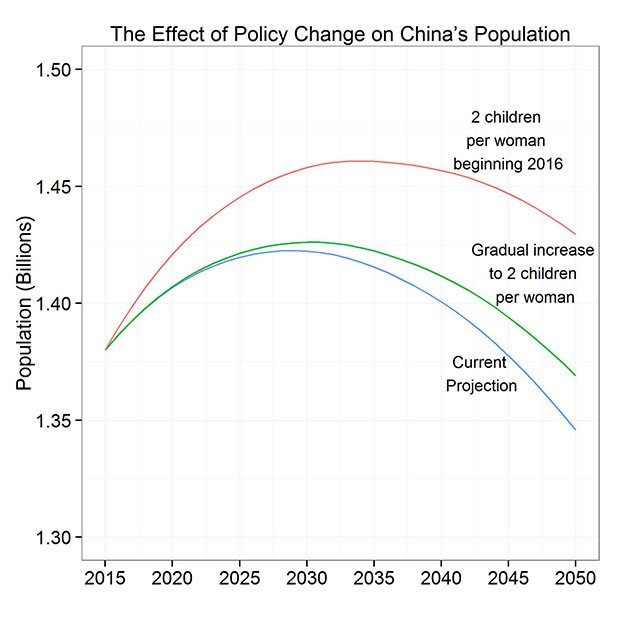China’s population problem
January 5, 2019 | Expert Insights

The Chinese population has shrunk for the first time in 70 years. Experts have warned of a ‘demographic crisis’ that will have a significant impact on the country’s slowing economy.
Background
China's population reached the billion mark in 1982. China is presently the most populous country in the world with around 1.41 billion people. Though it ranks the highest in absolute terms, its growth rate is currently 0.59 per cent, ranking 159th in the world. Under Mao Zedong, China nearly doubled in population from 540 million in 1949 to 969 million in 1979.
Initially, China's post-1949 leaders were favourably inclined to regard a large population as an asset. But the liabilities of a rapidly growing population were soon becoming apparent. In the mid-1970s, the maximum recommended size of a family was two children in cities and three or four in the country. Since 1979 the government has advocated a one-child limit for both rural and urban areas and has provided a maximum of two children in special circumstances. The overall goal of the one-child policy was to keep the total population within 1.2 billion through the year 2000. In 2016, the one-child policy was replaced by the two-child policy where the government has imposed a limit of two children allowed per family.
Population control strategy adopted had a significant impact on the life expectancy in the country. Life expectancy increased from 40 years to 70 years in 50 years. Many European countries took a century to achieve the same goal. In 2000, while the ratio of income levels in the United States and China were about 10 to 1, female life expectancy for China was only about five years below the threshold level of United States, i.e., 75 years in China versus 80 years in the US.

Analysis
For the first time in 70 years, the population in China has declined. Many experts are warning that a “demographic crisis” that could eventually place pressure on the country’s economy. Analysis by a US-based academic Yi Fuxian revealed that the number of live births in the country in 2018 fell by 2.5 million years on the contrary to a predicted increase of 790,000 births.
Though the Chinese National Bureau of Statistics is expected to release an official nationwide birth census for 2018, data by some local authorities indicate a significant drop in births last year. Dr. Yi said that he is sceptical of the data published by National Bureau of Statistics as he believes that they inflate the number of births to account for those families who may have not registered their second, third or fourth child.
For each elderly citizen, seven people are working and contributing to the social welfare system, Yi said — a figure that is expected to shrink to just four by 2030. He also said the number of women of childbearing age is also likely to fall by more than 39 per cent over the next decade.
The China Daily newspaper has also reported that the country’s birth rate is set to decline further this year as well as over the next few years, despite the country’s 2016 move to relax its controversial “one-child policy”. According to data published by the China Association of Social Security, China’s elderly population is expected to reach 400 million by the end of 2035, up from around 240 million this year, putting the country’s health services and pension funds under immense strain.
China today remains the world’s most populous country. However, many experts have revealed that India would soon exceed China. Monumental demographic changes in the country are a vital driving force to the significant decline in population.
From 1982 to 2000 China enjoyed an average annual rate of growth in the support ratio of 1.28 per cent. Today, the net gain due to favourable demographic conditions has reduced to only one-fifth of the average level maintained during this period.
Assessment
Our assessment is that if appropriate measures are not implemented in the country, the demographic future for China would result in a massive decline in fertility rates. Solving the ageing crisis in the country and preventing a similar situation as Japan must be a top priority for the government. We believe that human resource is the principal contributor to the economy and if the demographic dividend keeps declining it would have a disastrous effect on the economic prosperity of the country and the global economy.
India Watch
Dr. Yi said: "The US economy will not be overtaken by China, but by India, which has a younger population". According to the revised 2017 edition of the UN population prospects, by 2024, India is expected to surpass China. India’s large young population is beneficial for the country. By 2020, India will have a median age of 28 compared to 37 in China and the US, 45 in Western Europe, and 49 in Japan. However, the lack of technical skill, right education and lack of jobs could prevent the country from harnessing this demographic dividend and unleashing the economic benefit.








Comments